How Moonshiner Junior Johnson Earned NASCAR Validation at Hickory in 1955
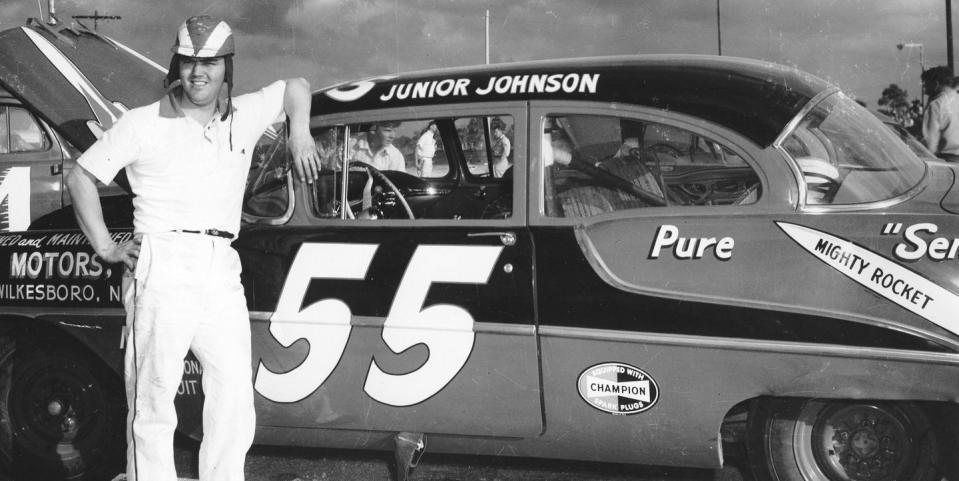
Junior Johnson’s career as a NASCAR Cup driver was winding down as David Pearson’s was accelerating.
They met in a memorable battle for the win Sept. 11, 1964 at Hickory (N.C.) Speedway, then a .4-mile dirt track. Pearson led the first 21 laps before Johnson bulled his way in front for the next 43.
“To outrun Junior there was something,” Pearson remembered years later. “After lap after lap, I finally got around him. He followed me real close, hounding me, trying to get me to overdrive and get in the wall. I just kept cutting across coming off the second turn and slinging mud in his radiator. Got his old car running hot.”
Johnson parked at lap 89, his car overheating. Pearson had passed him on lap 65 for the lead and never looked back, winning the 250-lap race by three laps over Larry Thomas.
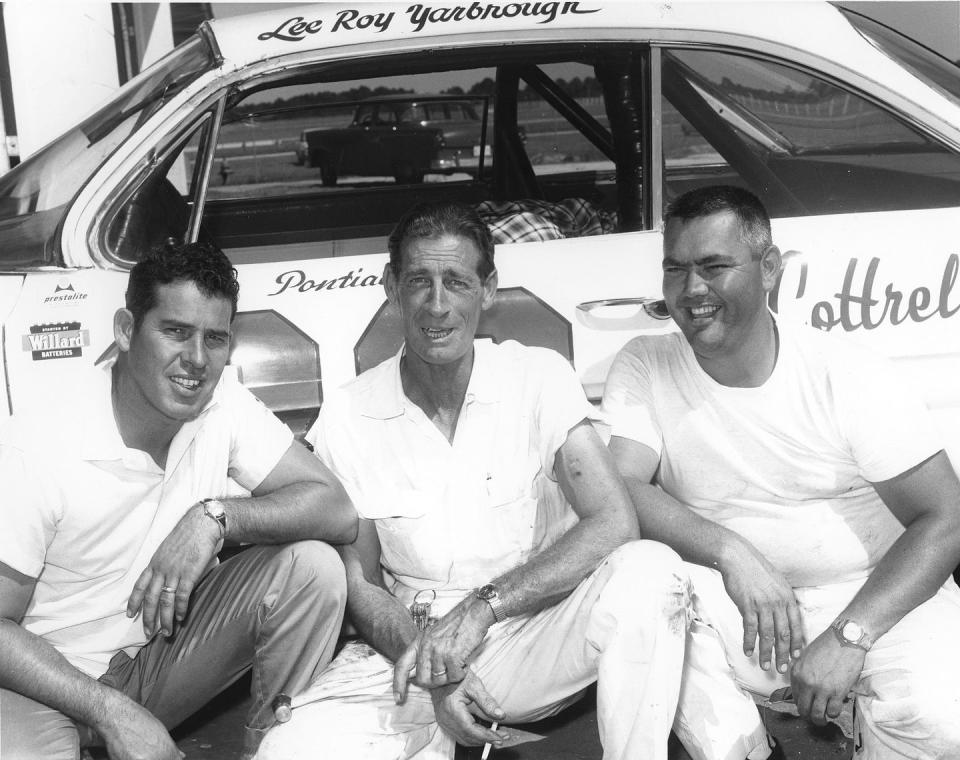
In those days, beating Junior Johnson on a dirt track was a big deal. Competitors often needed a smart, slick move like Pearson’s to deny Johnson, a driver from the old-school mold who squeezed engines, tires and frames for all they were worth. For Johnson, it often was win or crash.
From 1958 to 1965, Johnson scored 45 of his career-total 50 wins. He was a force of nature, one of the pioneer drivers who raced with no evident sign of fear, living purely on the edge.
“You always had to wonder if the car would hold up under him,” said Dale Inman, crew chief for driver Richard Petty, who said he often watched Johnson drive with amazement. “That’s the way he was. There were no ifs, adds or buts about it. He drove the car unmercifully.”
Although Johnson won races with regularity, he never won a Cup driving championship, clear evidence of his win-races-at-all-costs approach.
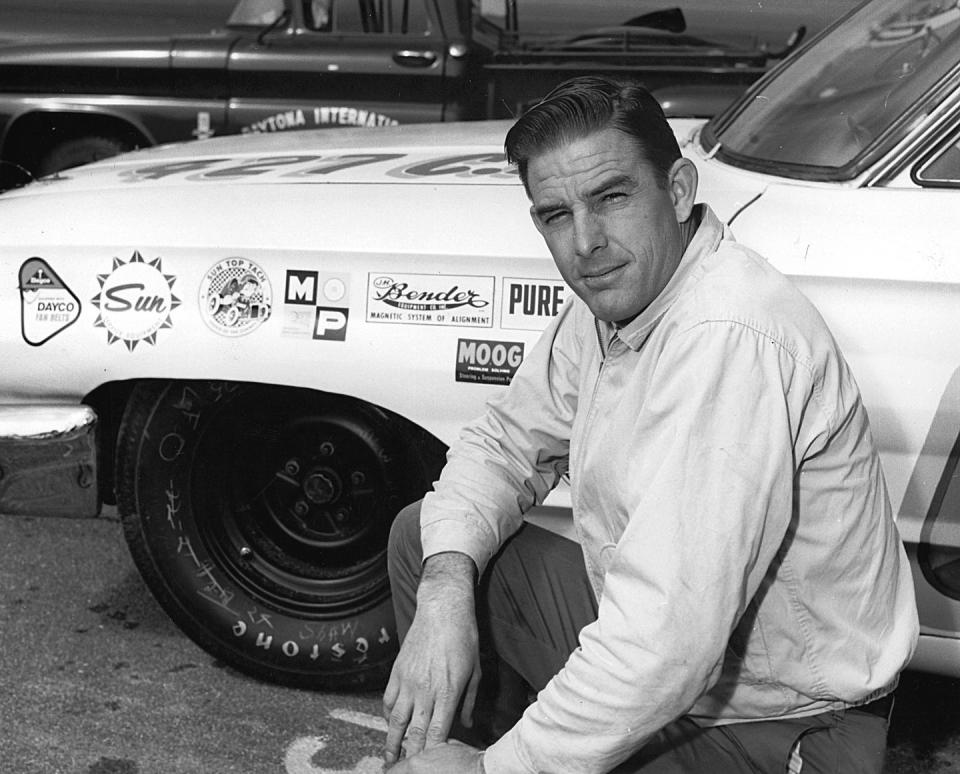
Johnny Allen raced often against Johnson. “Crawford Clements was Junior’s crew chief in the early ’60s,” Allen said. “They started having problems, falling out of races after leading because something would break. Crawford said it was Junior, said he would break an anvil, that nobody could keep a car under him.” Johnson eventually quit the team.
NASCAR historian Buz McKim said Johnson was similar to Curtis Turner, another star of NASCAR’s early years. “They just didn’t care,” he said. “They were reckless. They were really kind of scary crazy.”
Robert Glenn Johnson Jr. was working the ground of the Johnson family farm behind a mule when his older brother, L.P., offered him the chance to drive a race car. Junior knew almost nothing about racing, but he had driven fast cars making moonshine deliveries from the Johnson family’s other “business” along Carolina backroads, so he hesitated only a moment before heading to the track. He needed a minute—he had been plowing barefooted, so he figured he needed to head to the house to get shoes to race.
“When I got into racing, I already had the experience I needed,” Johnson said years later. “I didn’t have to learn how to drive fast. I already knew how to do it.”
He arrived in Cup racing in 1953 at the age of 22. He won on tracks across the country, totaling 50 victories before retiring in 1966 and moving toward team ownership, where he was even more successful than in his driving days.
Johnson was an easy pick for the first class of the NASCAR Hall of Fame. He drove from the backwoods of western North Carolina to the boardrooms of major corporations and into the hearts of thousands of race fans who liked their drivers to talk slow and run fast.
“I had hauled moonshine pretty much since I was about 15,” Johnson said. “I was very talented with a car compared to most of the guys I grew up with. I had probably more nerve than they had.
“That sort of set the stage for me starting to get into it. Now and then, somebody would call me and want me to go drive their race car for them. I did that for a few years and kept working my way up. The first thing you know, I was in it full-time.”
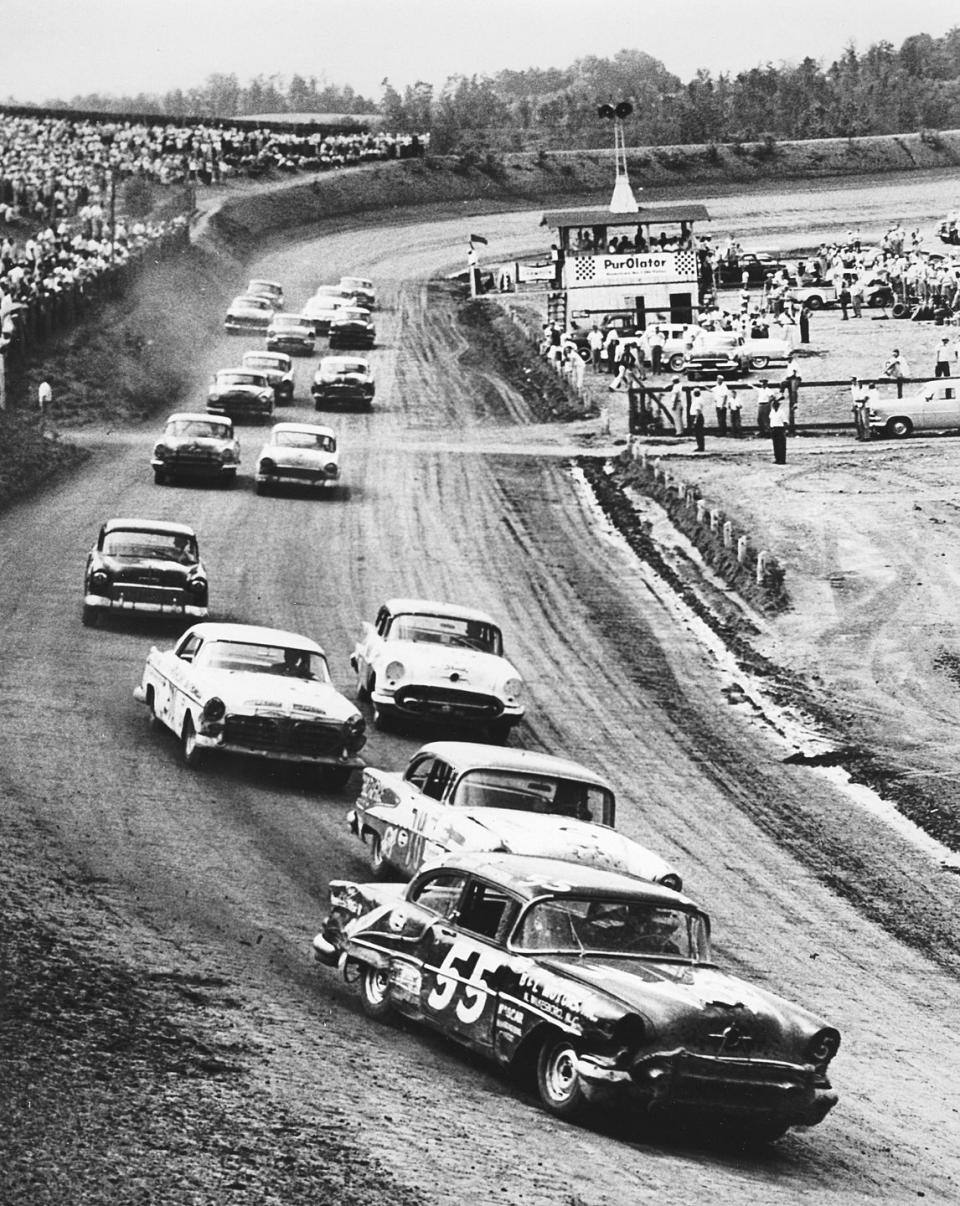
In 1955, Johnson notched his first Cup victory at Hickory, a bedrock NASCAR track and a proving ground for many Carolinas drivers over the years. Johnson led the final 29 of 200 laps, winning the race under caution over second-place Tim Flock, another pioneer legend.
Although Johnson was a titan on NASCAR’s short tracks, he also loved the runaway speeds of the bigger tracks. He won the 1960 Daytona 500, the second 500 at the then-new giant Daytona International Speedway, and is widely credited with “discovering” the phenomenon of stock-car drafting at the high-speed track. Despite having a slower car, he used the technique to slip through the field and emerge victorious.
Johnson gained fame beyond the usual context of a NASCAR racer when celebrated writer Tom Wolfe made him the center of a March 1965 article in Esquire magazine. The story titled “Junior Johnson is the Last American Hero—Yes!”—described the rise of Johnson, his natural habitat in the Brushy Mountains of western North Carolina and the attraction of stock car racing to the thousands who streamed into North Wilkesboro Speedway to watch him run. Wolfe’s piece is respected as one of the greatest stories in sports journalism and served to give NASCAR, still an infant in the world of sports leagues, a better national profile.
Johnson won 13 times in 1965 then decided abruptly to retire the next year.
“I said I had had enough of it and that I had other things I needed to do, and just walked away from it,” he said.
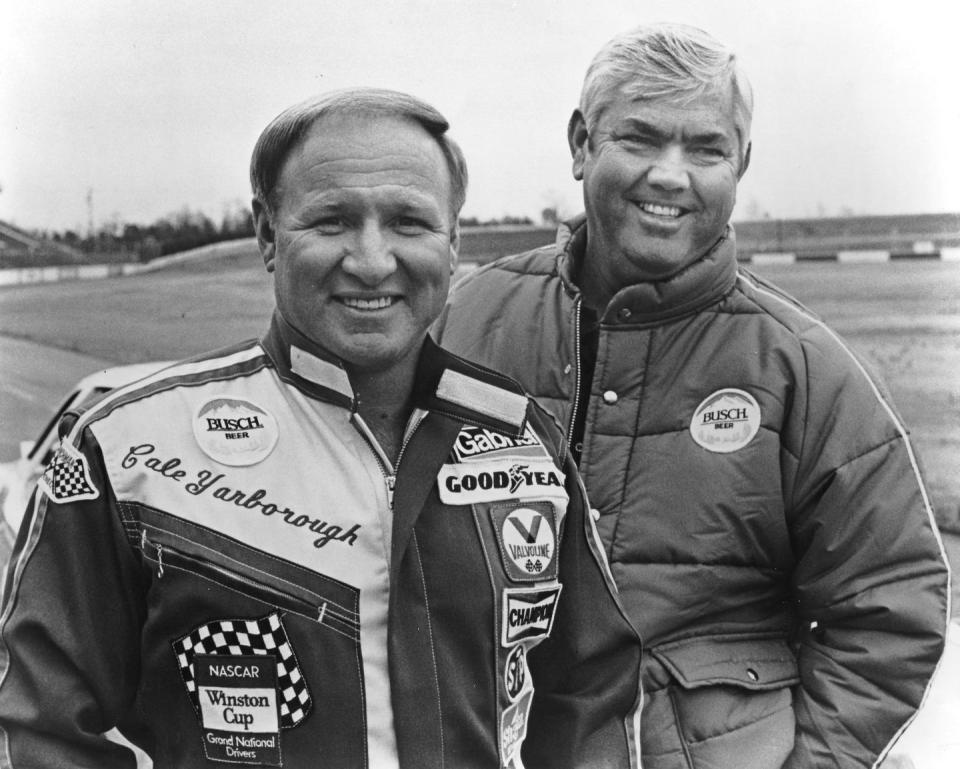
He came back as a car owner and excelled, winning Cup championships with Cale Yarborough (1976, ’77, ’78) and Darrell Waltrip (1981, ’82 and ’85).
Johnson operated a huge cattle farm on his property in Hamptonville, N.C. He built a mansion-type residence near his childhood home but moved to a residential neighborhood in Charlotte, N.C. as his life slowed in later years. He died in 2019.
“I guess I had three careers in my life—moonshining, driving, car-owning,” Johnson said. “I think I enjoyed the moonshining better than any of them. I don’t know why. I guess it was the youth side of it. You never forget what you do as a kid.”
But wait … there’s more
• Johnson’s life might have moved in another direction if not for a tractor accident on the family farm when he was 14. He had drawn considerable attention pitching for local baseball teams but broke his arm in the accident. “I dreamed of playing for the New York Yankees,” he said.
• The Johnson family’s moonshine business slowed Johnson’s driving career. He was arrested at one of the family’s stills in 1956 and eventually served 11 months in federal prison in Ohio.
• In the 1970s, Johnson helped broker the sponsorship deal that paired the Winston cigarette brand of the R.J. Reynolds Tobacco Co. with NASCAR for three decades.

 Yahoo Autos
Yahoo Autos 